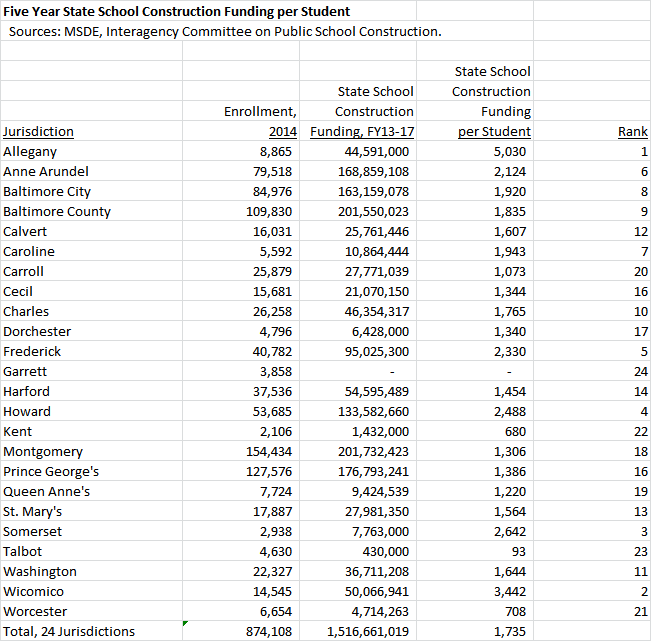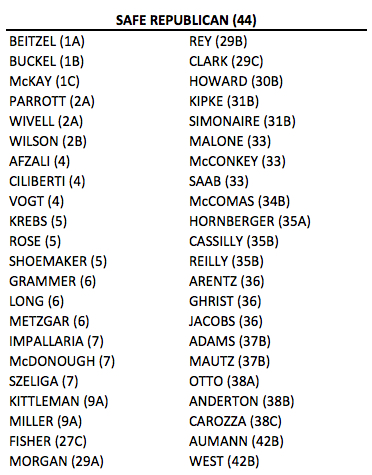By Adam Pagnucco.
Thanks to County Executive Ike Leggett for responding to my post on how his administration ignored my proposal to make up revenue for the Department of Liquor Control (DLC). I stand by my piece and reply to several of his points as follows.
1. Contrary to the Executive’s contention, my proposal was in fact never analyzed during the time of the DLC task force. His consultant’s report never mentions it despite the agreement of his staff to include it. Try finding my proposal, my name, a reference to Seventh State or an analysis of my idea for using cable funds to finance DLC’s debt in the report. They are simply not there.
2. The Executive alleges that I made a “basic math mistake” by omitting DLC’s debt service from the revenue needing to be replaced. Not at all. Anyone reading my proposal can see that I did not omit it. I simply dealt with it separately from the return DLC sends to the operating fund since the two revenue streams require different fixes.
3. The Executive is correct that the state has imposed numerous unfunded mandates and fees on the counties in recent years. I should know. I helped organize a campaign against the teacher pension shift in 2012 that included county governments, school boards, community groups and elected officials in both parties. But rather than merely complain about the state, let’s recognize that it has a role to play in dealing with the liquor monopoly and the revenue question since DLC was created in state law. A visionary Executive with a plan to transition away from the liquor monopoly would be invaluable in securing the state’s cooperation.
4. The Executive is wrong about my proposal to use cable funds to service DLC’s debt in two ways. First, he claims that I proposed raising the 5% fee the county currently levies on cable bills. That’s not what I said, and in any case, the fee is already at the maximum level allowed by federal law. Second, he claims that “Cable fund money cannot legally be used for purposes other than cable-related needs: technology and communication purposes. We cannot take Cable Funds to build roads and schools.” That is absolutely wrong. The county’s own cable lawyer advised the County Council in 2012 that the county has discretion over how the 5% fees can be spent, but not on amounts collected over that level or on behalf of municipalities. Those amounts not subject to county discretion were excluded from my analysis. In fact, the Executive transfers some money from the cable fund to the general fund right now. The approved FY17 budget states, “Funds are transferred from the Cable Fund to the General Fund to cover the cost of certain administrative services provided by the County to the Cable Fund ($654,353) and other contributions ($5,163,433).” That’s right, folks, the Executive’s statement in his reply to us is contradicted by his own budget.
Why is the Executive so resistant to the idea of using cable funds for DLC’s debt service? Perhaps one reason is because cable fees are the source of millions of dollars for County Cable Montgomery and Montgomery Community Media, two public “news” outlets that provide “coverage” for county elected officials. Try to locate an unflattering “news” article about county elected officials in any of the “coverage” provided by these outlets. Good luck finding any because one of them is part of county government and the other is a non-profit that gets more than 80% of its budget from the county. What’s the better use for this money? Financing Pravda-style public relations or helping to fix the liquor monopoly?
5. The Executive notes that Worcester County’s former monopoly on spirits may be coming to an end. He is probably right about that. Worcester’s monopoly, while not including wine and beer as Montgomery’s does, did an even poorer job of customer service than MoCo and was busted by the Comptroller for breaking numerous laws in 2010. After Worcester’s monopoly was opened to competition in 2014, the county lost 42% of its wholesale business after a year (while keeping 96% of its retail volume) and its leaders may decide to exit alcohol sales altogether. But if they do so, it will be because they have decided they can’t compete with private distributors.
That seems to be the rationale the Executive has for shielding DLC from competition: since (in his view) it can’t compete, competition shouldn’t be allowed. How is that a good thing for licensees and consumers? Isn’t there a chance that open competition could cause DLC to improve while making private wholesalers pick up their game?
Also, the Executive says, “In the liquor business it is the suppliers/manufacturers who decide which ONE distributor/wholesaler will sell their products.” That may be true under most circumstances in Maryland, but COMAR 03.02.01.12 exempts county liquor dispensaries from this arrangement. In other words, state law allows manufacturers to sell to both county liquor sellers and private distributors. That is what happens now. In fact, DLC couldn’t exist without this exemption. Competition between DLC and the private sector can occur if the state allows it. The Executive simply opposes it.
The County Executive’s response shows that he is sensitive to criticism on this subject. If only that were enough to make real progress on the county’s shameful liquor monopoly.





